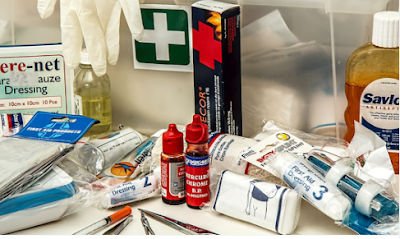Antihistamines:
Introduction to Antihistamines
Antihistamines are a class of medications commonly used to treat allergy symptoms, such as sneezing, itching, and runny nose. They work by blocking the action of histamine, a compound released by the immune system during allergic reactions.
Discovery of Antihistamines
The discovery of antihistamines dates back to the 1930s when researchers first identified compounds capable of blocking the effects of histamine. The development of the first-generation antihistamines revolutionized the treatment of allergies and paved the way for further advancements in pharmacology.
First-generation Antihistamines
First-generation antihistamines, such as diphenhydramine and chlorpheniramine, were among the earliest antihistamine medications developed. While effective at relieving allergy symptoms, these medications often cause drowsiness and other side effects due to their ability to cross the blood-brain barrier.
Second-generation Antihistamines
Second-generation antihistamines, including loratadine, cetirizine, and fexofenadine, were later developed to address the limitations of first-generation drugs. These medications are less likely to cause drowsiness because they are designed to have minimal impact on the central nervous system.
Uses of Antihistamines
Allergy Relief
Antihistamines are primarily used to alleviate symptoms of allergies, such as hay fever, allergic rhinitis, and hives. They help reduce sneezing, itching, nasal congestion, and other allergic reactions triggered by histamine release.
Motion Sickness Prevention
Certain antihistamines, particularly dimenhydrinate and meclizine, are also used to prevent motion sickness. They work by blocking histamine receptors in the brain, reducing nausea and vomiting associated with motion-related activities like traveling by car, boat, or airplane.
Treatment of Insomnia
Some first-generation antihistamines, such as diphenhydramine, have sedative effects and are occasionally used to treat insomnia. However, their long-term use for this purpose is generally not recommended due to potential side effects and tolerance development.
Management of Nausea and Vomiting
In addition to motion sickness, certain antihistamines, such as promethazine and cyclizine, can be used to manage nausea and vomiting caused by various conditions, including chemotherapy, surgery, and gastrointestinal disorders.
Side Effects and Considerations
While antihistamines are generally safe and well-tolerated when used as directed, they can cause side effects such as drowsiness, dry mouth, dizziness, and blurred vision. It's important to follow dosage instructions carefully and avoid driving or operating heavy machinery while taking these medications.
Overview of Antihistamine Brands
Antihistamines are available in both over-the-counter (OTC) and prescription formulations. They are marketed under different brand names, each containing specific active ingredients. These brands are classified into two main categories: first-generation and second-generation antihistamines.
First-generation Antihistamine Brands
First-generation antihistamines, such as Benadryl (diphenhydramine) and Chlor-Trimeton (chlorpheniramine), were among the earliest antihistamine medications developed. While effective at relieving allergy symptoms, they are more likely to cause drowsiness and other side effects due to their ability to cross the blood-brain barrier.
Second-generation Antihistamine Brands
Second-generation antihistamines, including Claritin (loratadine), Zyrtec (cetirizine), and Allegra (fexofenadine), were later developed to address the limitations of first-generation drugs. These medications are less sedating and are preferred for daytime use due to their minimal impact on cognitive function.
Conclusion
In conclusion, antihistamines play a crucial role in the management of allergy symptoms, motion sickness, insomnia, and nausea. With the discovery of first-generation and second-generation antihistamines, healthcare providers have a range of options to choose from based on individual patient needs and preferences. Antihistamines offer effective relief for allergy symptoms and have several off-label uses for other medical conditions. While they are generally safe when used as directed, it's important to consult with a healthcare professional before using antihistamines for off-label purposes.
FAQs about Antihistamines
1. Are antihistamines addictive?
Antihistamines are not addictive, but some individuals may develop a tolerance to their sedative effects with long-term use.
2. Can I take antihistamines every day?
It's generally safe to take antihistamines daily for allergy relief, but long-term use should be monitored by a healthcare provider to minimize potential side effects.
3. Do antihistamines interact with other medications?
Yes, antihistamines can interact with certain medications, including sedatives, tranquilizers, and monoamine oxidase inhibitors (MAOIs). Always consult with a healthcare provider or pharmacist before taking antihistamines with other medications.
4. Can children take antihistamines?
Yes, certain antihistamines are approved for use in children, but dosage recommendations may vary based on age and weight. It's important to use pediatric formulations and follow dosing instructions carefully.
5. Are there non-drowsy antihistamine options?
Yes, second-generation antihistamines are considered non-drowsy and are preferred for daytime use due to their minimal sedative effects. However, individual responses to these medications may vary.
6. Can I use antihistamines for cold symptoms?
Antihistamines are not typically recommended for cold symptoms unless they are accompanied by allergies such as allergic rhinitis.
7. Are second-generation antihistamines better than first-generation ones?
Second-generation antihistamines are often preferred due to their lower risk of sedation, but the choice depends on individual factors and the specific symptoms being treated.
8. Can antihistamines be used to treat food allergies?
Antihistamines can help relieve mild symptoms of food allergies, such as itching and hives, but they are not a substitute for epinephrine in severe allergic reactions (anaphylaxis).
9. Are there any interactions between antihistamines and other medications?
Yes, antihistamines can interact with certain medications, including central nervous system depressants and anticholinergic drugs. Always check with a healthcare provider or pharmacist before combining medications.
10. What should I do if I experience side effects from antihistamines?
If you experience any adverse effects from antihistamines, such as drowsiness, dizziness, or dry mouth, consult your healthcare provider for guidance on adjusting your dosage or switching to a different medication.



